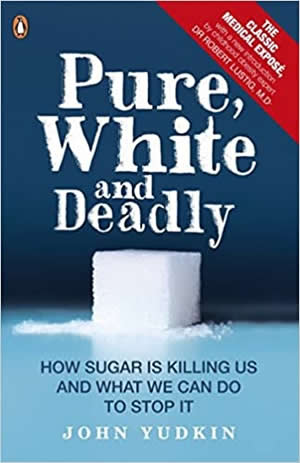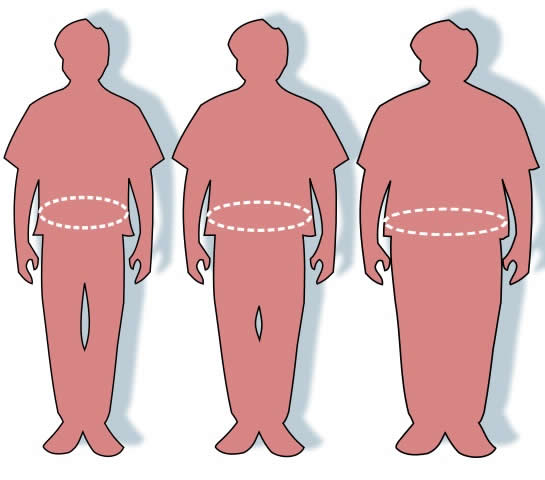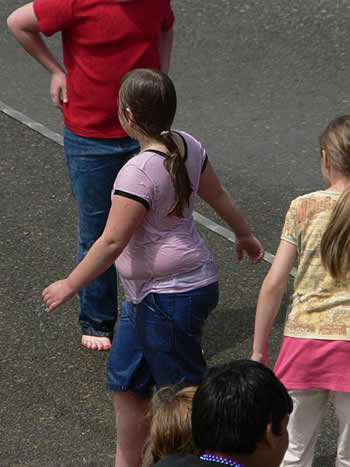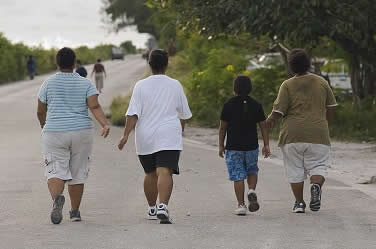Positive Health Online
Your Country

Obesity – A Survey of Factors and Practical Responses
by Edwin Alan Salter(more info)
listed in weight loss, originally published in issue 278 - May 2022
Our fatness is totally obvious and has increased relentlessly over several generations, a global pandemic (WHO, now 13% adults obese, x3 since 1975) as many poorer catch up with and exceed the richest. It harms and shortens life, the tediously obvious responses diet and exercise. So what more to say in a broad survey? Above all, that prevention is best, and public policy must change.
What we eat is not a free, informed choice. It is subject to availability, cost, and persuasive advertising. I’m writing this with the 2021 Christmas ads in full swing, and the merry eaters seem kin to our ancestors. Plenty was then a rare treat to celebrate together, a help through harsh times. The storage of calories as fat has been an important survival aid, our psychology adapted to enjoy the reassurance of excess. Now accustomed to weight increase, we naturally enough adapt (‘herd instinct’) to fit in, and our perception of normality has shifted (in UK we guess excess weight prevalence at mid-40s% but actually near 70%). We tend to associate with others like ourselves through common interest and most obviously within families, and this reduces awareness and heightens resistance to comment. Entirely novel treats gratify immediately but fleetingly.
Yudkin Pure White and Deadly
Discussion of obesity is hampered by accusations of ‘shaming’, but such an intention would be unfair and weaken resolve. If we have succumbed to over-eating it is, for many reasons, not entirely our own fault. Commerce effectively obstructs evidence of harm: it claimed that tobacco is safe and sabotages (as the 2009 hoax) the science and ‘too anxious’ discussion of climate change. A food example is the way sugar alarm (nutritionist John Yudkin, ca.1960 on, as in his White, Pure, and Deadly book) was stifled and ‘energy foods’ still abound. All these bring damage and risk that need addressing. Obesity affects self, others as burden and model, and society by inefficiency and cost of care, while excess consumption and waste harm environment and climate. But the focus here is on basic understanding and on responses we can achieve for ourselves (individual reasons to choose weightiness – e.g. relevance to work or sport, for a dominating or genial image – are not discussed).
In Britain, as in most developed countries, obesity is often now associated with low income and distress. The poorest relying on cheap high calorie basics may add pricier ‘feel good’ items ready-made but of doubtful benefit. Simple cooking is admirably worth learning to take real (not illusory) control of choice and cost, cookery diminished in schools (along with much else useful): nutrition is also neglected in medical education and practice. A depressing everyday sight is poor families with children following parents and grandparents toward obesity and harmfully low expectations: in England the highest obesity rate is for women in deprived areas. Importantly, causation operates in both directions: relative poverty now tends to generate weight excess and, conversely, obesity tends to limit earnings by incapacity and stigma.
Globally, obesity rates linked with relative wealth, personal and national, are now: low (≈4%) for poorest in poorest places; steady (≈14%) for wealthiest everywhere; and in between a transition wave of obesity rising with affordability and bringing much economic burden. Historically, fatness was only plausible for the wealthy (or an uncommon symptom of disease, perhaps with oedema). Henry V111 provides a case study, fatally resorting to food and alcohol after a jousting accident brought painful disability. As for Queen Victoria, after a childhood of unwise feeding and restricted freedom, she simply continued to fatten with pleasure and when warned just added on diet foods
We can also learn from the contrary response of anorexia (sexuality, self-image …) and from food allergies (chemicals, ‘hygiene’ …), both burgeoning over the past half-century, especially among the young, and very harmful. These further evidence the sheer unnaturalness of life for many, as due to social communication very salient but distant and untrustworthy and to technical innovation.
Silhouettes and waist circumferences representing optimal, overweight, and obese
Credit: Wikipedia
Measures
Many measures in this article are current guide approximations to be checked when taking specific action. First some units. The food calorie used here is 1000 metric calories, the energy equivalent of warming 1 kilo of water by 1˚ C (our bodies roughly 60% water, core temperature almost steady near 37˚ C). The most common measure of weight fitness is the Body Mass Index [BMI] whose rationale is clear from the formula (weight in kilograms divided by height in metres squared) though for a few people (perhaps heavily muscled) it misleads. A circumference shape measure (usually waist divided by height) emphasizes damaging interior fat (typical shape max.: m. at waist ‘apple’, f. at hip ‘pear’), and it’s easy to see this is best not more than half height. (A dark imagining: a self-grown to be spherical and covered in fat, so thermally insulated and with minimal cooling surface for its volume.)
The BMI divisions are: up to 18.5 underweight, up to 25 normal, up to 30 overweight, up to 40 obese, over that morbid, severely obese. Taking 21 as a ‘good’ index, in England a woman of average height 1.62m should weigh 55kg but actually averages 70kg; and a man of average height 1.75m should weigh 64kg but actually averages 84kg. The obese bear at least an extra 24 (f) to 28 (m) kilos: try carrying shopping bags with such excesses. The shortening of life (the heaviest human, a very ill man at max 635? kilo, survived to age 42) varies greatly, for morbid obesity around 10 years less is plausible. Rational response is hampered by both complacent and despairing views of self.
These children, playing in a public space, vary in their proportion of body fat
Credit: Wikipedia
The approximate statistics for adults in this country are near 40% overweight and 30% obese (1 in 8 morbidly). For 1960, before the surge, the estimate is about 1% (m) and 2% (f) obesity: look at old family photos. The rate of change is now appalling: over 20 years severe obesity increased 3x for women, 7x for men. Childhood rates also rocket especially in the poorest areas, children’s services essential to prevention much cut back. Covid restrictions and anxieties have added further harm.
Calorie need, varying with environment and employment, is around 1800 cal daily and exceeded almost worldwide, crises of disorder and famines excepted. Global average intake is higher at around 2,300 cal, in some countries roughly double (UK perhaps 3,500, USA tops at about 3,800). Annual global obesity deaths are estimated at over 2.8 million (rate probably exceeding Covid).
Birth
For many people, much of life is pre-shaped at birth by the givens of biology, cultural beliefs and family circumstances of class, expectation and wealth. Family awareness and planning help to identify, tackle and hopefully escape problems and handicaps.
Our genes were hardly different before these few generations of weight increase. Their effects do include body form, appetite and taste, but though these may facilitate fattening they are rarely compelling (Prader-Willi Syndrome has anomalies in ghrelin signalling). The range of birth weight survived has, of course, widened. The simplest finding is some linking of high maternal weight with high birth weight and of that with subsequent adult obesity – a vicious circle across generations.
Participants of a walk against Diabetes and for general fitness around Nauru airport
Credit: Wikipedia
Our global population nears 8,000 million, up about 7x over 200 years. Although the reproduction rate is falling, the global median age (30) is youthful and total population will much increase (not exceeding 12,000M is hopeful?). However, overall present intake is very excessive, more than a quarter of food is wasted (at gathering, transport, storage, selection, cooking, plate), and we could easily reduce those foods which demand great resources (e.g. beef). Even with population growth, food need not run short (unless climate disasters such as drought intervene). The destruction for food sources of habitats (e.g. of tropical forest for palm oil) essential to biodiversity and climate stability should stop and alternatives (from permaculture to hydroponics) be further explored.
Physiology
Our Basal Metabolic Rate is the energy to maintain life without counting external work and it includes keeping warm, essential biochemistry, breathing and circulation. BMR increases with weight and height, reduces with age, and likely takes about two-thirds of necessary calories. When we eat, carbohydrates are digested and provide glucose, and in excess that is converted to fat and stored. One kilo of fat holds around 7500 cal, and food energy supply is about 4 cal per gram from carbohydrate and protein, about 9 from fat. Fat is essentially triglycerides, glycerol linked to three long chain organic acids (the kink in unsaturated C=C cis molecules helpful against dense deposits)
The adipose triglyceride fat cells are mainly ‘white’ subcutaneous located near the body surface; others are ‘brown’ visceral sited around body organs, normally relatively few, and excess is inflammatory (both have other functions that affect metabolism). The white use fat to provide immediate energy for activity, the brown generate warmth by using fat in a circular reaction (triggering thermogenesis by occasional cold exposure can have valuable effects). In white cells triglycerides are broken down to release glycerol which the liver converts to glucose blood sugar. The basic and sustainable aerobic process uses available oxygen in blood (reacting with glucose to carbon dioxide, water, energy). The much less efficient anaerobic process (akin to fermentation but yielding lactic acid not ethanol) is supplementary when muscular effort requires.
The principal hormones are ghrelin for hunger (anomalies in anorexia) and leptin for satiety (resistance may occur in obesity), and our habits affect these. Hypothyroidism promotes weight gain. Research into the neurohormonal system may provide aids to weight loss.
Diet
The familiar basic is calorie reduction with limits to refined carbohydrates and processed foods, also salt, fats and red meat. About half of calories typically come from carbohydrates, the rest from fat and protein. Remember cynically that processing is usually intended to play to our in-built appetites, making consumption swift and triggering repetition: as deterrence, read the strange chemicals on otherwise inviting packaging (an anecdote: a blackberry bush – I pick and eat – passing youngsters are appalled). Beware feeding the body as the easiest substitute for control over life.
Increase vegetables, legumes and fruit in proportion and variety (root, stem, leaf, seeds, nuts; fibre; fungi; perhaps consider plant colours, taxonomy, habitats). Vary carbohydrate starchy staples, and prefer to cook fresh foods, seasonal and local if possible. Eat proper meals calmly at regular times and avoid snacking. An adequate nightly period without eating (avoid late meals) is beneficial. Additives worth considering include some (live yogurt, sauerkraut …) for biome health in an age of processing and antibiotics, and any lifestyle compensations (perhaps some vitamins/ minerals/ omega-3 acids). Diet care is a simple first response to stop unwanted progress up the BMI scale.
Interesting evidence for healthy living in general now comes from telomere studies. Telomeres (repeated chemical units at the ends of chromosomes that protect them from damage – a bit like the grips at the end of shoe laces) gradually shorten as we age and also respond to lifestyle change, fitness and illness, our experience of life as good or distressing. So food comparisons are being made, for example where a ‘Mediterranean diet’ is retained by an older generation while the young switch harmfully to processed and fast food. I’m hopeful that telomeres will provide evidence, not dependent on cultural habits and beliefs, as to how humans can, in many ways, best live.
Masai Dance. Maasai Mara Reserve, Kenya.
The higher you jump the more women you can marry...
Credit: Wikipedia portrait by Dmitri Markine Photography
Exercise
Contemporary life means that almost all of us get too little exercise (again compare our ancestors for evolutionary guidance) and it must be added throughout life. Small children are too conveniently placated by screen watching that defeats normal development, education finds classroom subjects easier to present and examine than drama and games, and employment at a desk replaces labour. Life indoors can be too comfortable so we slump in warmth; and, for city dwellers in particular, seclusion within the household may alternate with, equally odd, restrictive crowds of strangers.
Exercise is best when part of a useful or life-enhancing activity though it may be needed purely as physical repair or improvement. Rough guides to calorie burn rates are purposeful walking and easy cycling about 300 cal per hour, easy running and circuit training 500, very vigorous activity 900.
The overall variety of our movement - body use, the dynamics and shapes of movement – is important and needs balanced range. Simplest in everyday life are: walking alertly at what feels a brisk pace preferably where there is a sense of nature, perhaps with some jogging; d-i-y; using stairs and doing jobs by hand rather than machine; interrupting periods seated. As natural, every few days add a short burst of higher intensity, and occasionally undertake a more sustained endurance. New activity should begin cautiously, especially when we are older. Expert advice is appropriate for a long-term regular formed routine which will provide basic body well-being - adequate strength and flexibility and, important but often neglected, posture, balance and breathing - over many years. Activity also generates arousal and helps against depression and anxiety.
With the specific target of fat reduction, it is useful to distinguish white/subcutaneous and brown/visceral. For the former activity is more intense and site specific, for the latter more general and with emphasis on a healthy lifestyle. Safe limits on intensity, exertion without distress, are very individual. Rough guides when starting prudently are: heart rate half way between normal and maximum (guess that as 220 minus age); finding it difficult to converse; pain beyond slight clearly confined to muscles. Excess weight adds the risk of moving large masses, so should be carefully progressive (calorie burn of course increases with body weight).
Responses
A conscious effort to live healthily brings positive expectations that, placebo-like, have real beneficial effects. Considering life circumstances during weight gain is likely a very useful guide to change, but progress can begin with a fresh objective stance. Meanwhile, try to reduce the onset of related disorders and check any medications for weight side-effects (up – anabolic steroids, down – neuro-stimulants). After success, good new habits must be continued to prevent the harms of yoyo-ing.
If a family member or friend is affected, the task is to raise the issue in a tactful way that is non-critical. A passing remark or slight humour, anecdote about others more affected, a generalisation about how we all change, these may open communication. Encouragement can reassure that change is entirely possible. If response is that “There’s not enough else in life to enjoy” that sets a first target. It sometimes happens that denial of concern (“This suits me” or “I’m not like them” or “I could change if I wanted to”) sadly defers action until there is a sudden sense of hopelessness and even more comfort eating. Teamwork with a buddy perhaps following the same programme or a group is supportive, and professional help from a counsellor or nutritionist may overcome blocks.
If direct action is beyond reach (distress or the fatalistic “It’s my genes/ hormones/etc, nothing to do”), try surreptitious change with any novel act as catalyst – a new friendship, excursion, hobby, good cause, home improvement – all such can start the ball rolling. If a failure has brought some sense of shame, “well this is a difficult one and we can all fail at first attempt”. Identifying the point of failure and its emotional focus will guide replanning with changed tactics and support.
Some changes are nearer to body issues and may redirect attention to good physical quality. There is an obvious evolutionary bias by sexual selection that links fitness and attractiveness, and psycho-social factors may add emotional complications. For enduring value a new skill is likely better than multiplying cosmetics. An attentive attitude, small gestures and expressions, can please despite physical handicap. Quality of voice and speech can also enhance life and long defy ageing.
A direct attack on obesity will generate finding out, thought and discussion (I’m aware that writing this article has enabled me to cheerfully incorporate numerous interests – some crop up in past issues of Positive Health PH Online). The balance of focus between reducing calorie intake and increasing activity is to be considered. The former begins with a calorie estimate and then examines the amount of eating and the characteristics of food chosen, the latter notes the increase of aerobic metabolism by exercise and perhaps of thermogenesis by cooler environments (a stimulating cold shower or walk sometimes). Any loss of weight provides encouraging hope, but regular weighing should be neither too frequent nor anxiously pondered – the trend is what matters.
Cutting back can begin easily by targeting a single item. A favourite quick treat, a more-ish chocolate or cake? Be ruthless and eliminate it from the household, a healthier alternative available. Adding too much sugar in drinks? Reduce it by a third for a month, and then again, allowing time for the sense of taste to adjust. A weekly low food intake day is a likely help. If necessary, a period of calories well below need is effective in forcing body fat breakdown (not less than the 800 cal daily for up to three months as described by Michael Mosley), nutrient balance and health monitored.
Some consequences of obesity may linger, but the vital aims are improvement and reduction of future problems. The tally of disorders clearly linked to obesity is appalling (and Covid hospitalization risk doubled): correlation does not confirm cause, but treating obesity may eliminate a shared origin. Obesity links with 80% of cases of diabetes (type two) and is also associated with cardiovascular disease, osteoarthritis, cancers, breathing problems, organ damage, and dementia. Overcoming obesity greatly benefits health and likely also prosperity (the two-way correlation, obesity both symptom and cause of poverty), with pleasures of activity and success.
This article generally links obesity in Britain with dissatisfying circumstances, doubtful self-worth, and the deceptive gratification of novel food and drink that should be curbed by regulation and tax. The USA, a model for conspicuous consumption, illustrates harms of intake: beside food (obesity, identified ‘a plague’ in the 1950s, now at 42%! – av. life expectancy reduces), it is notable for drugs and an opioid crisis and for female alcoholism. Understandably, the often corrupting concentration of wealth and power in many countries is mimicked at other levels by a culture of ’entitlement’ and ‘needing now’ that chooses badly: assertions of ethnicity and gender, culture and belief, add conflict. Rapid change (much computer driven) disrupts life and deskills some; and multiple remote threats may incline us to deny problems. Particularly for young people in a visually self-conscious society, excess concern that appearance is approved as distinctive or fashionable easily leads astray. Similarly, many waste many hours ensnared by irrelevant screen games and trivia, physically idle.
Modest self-respect and finding sufficiency to be enough would calm and help solve problems both global and personal, the mirroring abuse of our environment and our bodies. Amidst problems and anxieties, we can sensibly begin with ourselves to be healthier, happier, and meaningfully involved with others. The benefit of two hands is that one can kindly remove the other from the mouth.
Comments:
-
Edwin Salter said..
As an addendum to the article, I'd like to draw attention to the recent tv programmes Who Made Britain Fat presented by Michael Mosley. They clearly show how we are too often exploited by commerce, too rarely protected by government.
Obesity rates soar, especially damaging children, with Covid adding isolation, anxiety and inactivity (screen-watching and junk food delivery the easiest solace).
Fattened? Perhaps feel angry to motivate your win by slimming and encouraging others.
-
Andee Georgiou said..
A thorough and informative article.




